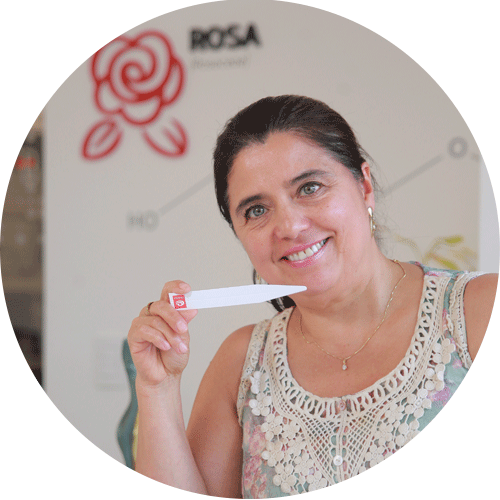After 35 years in the world of fragrances, the rose remains an enigma that captivates me, a flower I thought I knew, but which reveals a new facet to me every time. Because the rose, when formulated with passion and audacity, never repeats itself.
I have walked through fields of Grasse, where the dawn smells of dew and petals, where the air becomes dense, almost sacred, with the soft, velvety floral breath and moist green touches of the Centifolia rose. I have felt its soul in fresh roses, recently opened in the markets of Morocco, in dried roses full of silence and memory in Istanbul… and yet, in each one of them I felt something different. Each encounter with the rose has been inimitable, charged with a different emotion, a unique moment.
I want to talk about its present, its future, how we have learned to take it apart and rebuild it; how, today, the rose no longer belongs only to perfumes with a romantic soul, but dares to cross boundaries: it is urban, bold and disruptive.
As a perfumer, I have learned that modernizing the rose is not about denying it but about revealing it from another angle. I have worked with it in many ways: fresh, dark, luminous, spicy, barely hinted at. I have seen it transform, leaving behind the image of an untouchable flower to acquire a contemporary character, sometimes raw, other times minimalist, even irreverent. And yet… it never loses its essence.
Throughout my career, I have come to understand that the most famous flowers are also the most challenging. Their legacy commands respect, and it is easy to fall into safe formulas; but when I approach the rose from her essence, from her scent, her skin, her texture, I discover new paths, new emotions.
The classic rose accord is usually built from aromatic raw materials such as geraniol, citronellol, phenyl ethyl alcohol and linalool. There is a timeless beauty in its structure, but also a familiarity that can become predictable.
To modernize this accord involves redrawing its contours, and to do this, we can replace part of the floral body with surprising ingredients, such as florol, liffarome or veloutone, which soften the petal texture, giving it a more modern roundness.
A rose is not the same if you surround it with musk, amber or pink peppercorn. Sometimes, modernizing is not about changing the rose itself, but the world around it.
A rose accord can become urban when combined with citrus notes of bergamot, ozonic or earthy smoky notes of vetiver, or creamy, enveloping notes of sandalwood. It can acquire a timeless aura if accompanied by moss, laconic peach notes and even a metallic contrast.
One of the most powerful ways to update the rose is to remove what makes it obvious. Instead of showing it in the heart as the classic protagonist, we can hide it in the base, between resins and woods, or leave it barely suggested in the exit as a brushstroke. Thus, the floral accord is transformed into texture, atmosphere, and emotion.
The rose, for me, is not a flower. It is a language, a state of mind, a presence that can be feminine, masculine, ambiguous or pure abstraction, and I think it is that freedom that allows it to keep reinventing itself.
This World Rose Day, I look at it with the same fascination I had when I entered this profession. I am excited to know that it still has a lot to say. You just must know how to listen to it… with your nose and your heart.
Karen Henríquez – Perfumer, Cramer Latam
You can also find us on






